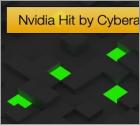Internet threat news
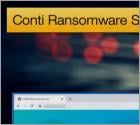
When this publication last covered Conti, the ransomware used by a highly skilled gang infamous for targeting large corporations, it covered how the gang had brought some of TrickBot’s experienced malware developers into the fold to work on making BazarBackdoor more efficient at distributing the ransomware. At the time it was speculated this would propel Conti into the ransomware hall of fame. The recent upheaval Europe seems to have placed a dedicated number of security researchers against the ransomware gang.

In a joint alert issued by the Cybersecurity and Infrastructure Security Agency (CISA) and the Federal Bureau of Investigation (FBI) the private and public spheres have been warned about increased instances of threat actors targeting satellite communications (SATCOM) companies. Along with the warning the alert has listed several mitigations that can be applied to help protect both the SATCOM provider and their customers.

What was once called AbereBot, an Android banking trojan, has returned with a new version going by the name Escobar. The new variant is capable of stealing Google AUthenticator Multi-Factor Authentication (MFA) codes meaning the attacker could bypass this layer of security when looking to steal credentials that could aid in the committing of bank fraud.

Even those with the shortest memory spans will remember the saga of the Spectre and Meltdown vulnerabilities discovered in 2018 that impacted the majority of Central Processing Units (CPU) been used at the time. The saga proved a difficult one to fix, especially at the start, when companies were more focused on pointing the finger at each other for who was at fault and what seemed arbitrary requirements were set by companies that hampered anti-virus detection. Now, new vulnerabilities have been discovered and the IT community will look to see if anything was learned when Spectre and Meltdown were news.
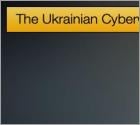
The Ukrainian invasion by Russian forces is dominating the headlines and for good reason. For many, particularly those in Europe, the sense of order has been shattered. From the war itself, the plight of Ukrainian refugees, Russians against the war taking great risks in voicing their opinion, to wealthy oligarchs losing billions of dollars in a few hours. Many stories are needing to be told competing for airtime, including the cyberwar that is currently playing out in real-time.

The single event that much of the world feared would happen as soon as Russian military forces were assembled on the borders of Ukraine and within Belarus happened during the early hours of Thursday morning. The result of the invasion has unleashed a raft of sanctions on the Russian financial system meant to hurt wealthy oligarchs who support President Vladimir Putin’s government. War, geopolitics, and related topics are not covered by this publication, however, just as the invasion began reports started emerging of Distributed Denial of Service (DDoS) attacks targeting Ukrainian banks and the country's critical infrastructure emerged.
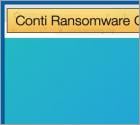
For the past four years, the name TrickBot has been featured in numerous conversations and articles, including this publication. We have covered how the malware has survived several takedowns only to return improved and ready to pave the way for ransomware gangs to encrypt high-value targets networks. We have also covered how the Conti ransomware gang partnered with TrickBot developers to improve the ransomware’s distribution and successfully targeting victims with TrickBot achieving initial compromise only for Conti to be dropped on the network to perform the knock out punch.
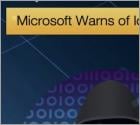
According to a recently published article by the Microsoft 365 Defender Research Team threat actors are quickly making great strides in targeting new emergent web technologies to conduct attack campaigns. Threat actors have now moved to target blockchain and Web3 applications with credential phishing campaigns. Web3 is the term used to define the emerging decentralized web built on the cryptographic foundations that enable blockchain technology to operate.
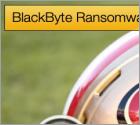
Many, particularly in North America, are still dealing with the hangover from the Super Bowl. Some overindulged if they won, and others looked to drown their sorrows. For the San Francisco 49ers who did not even play in the Super Bowl, any disappointment in not playing was impacted by a cyberattack that occurred just before the Rams and Bengals were set to start.
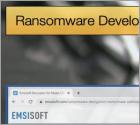
A ransomware developer has just recently leaked the decryption keys for three separate ransomware strains, all of which have caused no small amount of pain for numerous victims. The leak was made on Bleeping Computer’s forum, a platform used by many to remediate ransomware infections and discover more information about various malware families. Decryption keys were released for Maze, Egregor, and Sekhmet.

In terms of cyber security when North Korea is in the headlines it is generally as the attacker stealing vast sums of money or cryptocurrency and developing new malware strains and toolsets that keep security researchers busy. Put differently North Korean hackers are highly skilled at making a nuisance of themselves and tend to dish out the punishment.

It has been a bust week for advanced persistent threat (APT) groups if the cyber threat news cycle is anything to go off of. APT27, APT29, and Lazarus Group have all made the headlines on various platforms within a few days of one another. While this should not be read as a ramping up of activity precipitating a massive offensive, the developments highlight new capabilities and tactics used by each group that warrants further investigation.

In the second half of 2021, this publication covered the emergence of a Linux variant of the BlackMatter ransomware. The group behind the ransomware strain would make the news again when the group behind BlackMatter would cease operations following a law enforcement crackdown on several ransomware gangs and their infrastructure for high profile attacks conducted earlier in the year.
More Articles...
Page 8 of 52
<< Start < Prev 1 2 3 4 5 6 7 8 9 10 Next > End >>